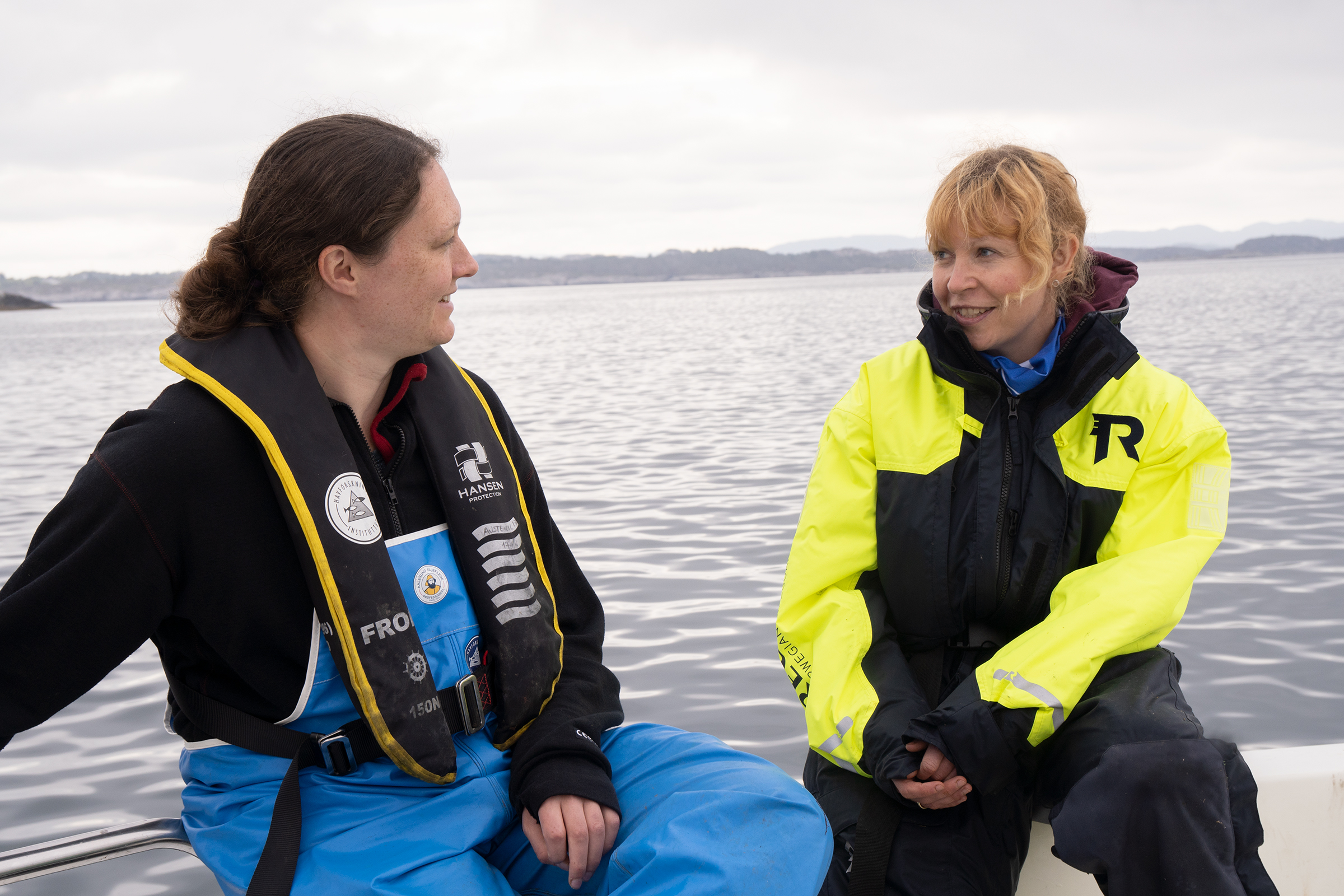How do spawning cod react to seismic surveys?

Forskar Lise Doksæter Sivle (til høgre) og postdoktor Kate McQueen reinskar utstyr på feltarbeid i Bakkasund i Austevoll.
Photo: Runar Bjørkvik Mæland / HIPublished: 25.07.2022 Updated: 23.08.2022
The Institute of Marine Research (IMR) gives advice on all seismic surveys carried out in Norwegian waters. One advice is to avoid seismic shooting during the spawning period, which is critical for the survival and reproduction of fish.
The background to this advice is a large-scale experiment that was carried out in the 1990s. In this study, it was found that cod and haddock were scared away from the area during the seismic shooting.
However, the study was carried out on grazing fish in the Barents Sea during the summer.
Tagged cod in spawning area
“No similar studies have been carried out on spawning cod, and it has been uncertain whether one would see the same evasive behaviour during the spawning season. That is why we started the SpawnSeis project,” says marine researcher Lise Doksæter Sivle.
Starting in 2019, researchers have tagged cod with acoustic transmitters in the Bakkasund spawning area in Austevoll municipality in Western Norway as part of the SpawnSeis project.
In two seasons (2020 and 2021) the researchers have been out with airguns and exposed the cod to seismic shooting during the spawning period. The results of these experiments are planned to be published this year.
Testing new technology
In the spring of 2022, the researchers carried out new experiments with a new technology for seismic investigations called a marine vibrator. Instead of firing shots intermittently, like the airguns, the vibrator makes a weaker, but continuous sound.
“One hypothesis is that marine vibrators may frighten fish and marine mammals less than airguns, since the sound is lower, and that it reduces the risk of hearing damage,” explains Lise Sivle.
“On the other hand, it may be that the constant noise from the vibrator causes the cod to move to a quieter area, or that it reduces the vocalization that is absolutely essential for successful spawning,” she adds.

Buoys receive signals from the cod
Out in the Bakkasund bay, where the experiment is taking place, the researchers have deployed a network of listening buoys, or receivers, which receive the signals from the tagged cod. This is a type of technology that is also called telemetry, which means remote measurement.
“The receivers record information about the location, depth, and acceleration of the cod. When a cod is registered by three different receivers, the position can be precisely estimated in three dimensions,” explains postdoctoral researcher Kate McQueen.
Telemetry and big data analysis are increasingly used in marine research. It provides completely new opportunities for understanding how animals move around in the wild and how they react to various conditions in the environment.
See also: Big data reveals the secret lives of animals
Provides a basis for good advice
In May and June, the marine scientists – helped by local fishermen – went out to retrieve data and change batteries on the overgrown receivers in Bakkasund. After offloading the data and changing the batteries, the receivers are ready to return to the sea and collect cod data for another year.
In the meantime, the data from the last spawning season must be prepared for analysis and publication. When data from this year’s experiment are compared with the results from earlier SpawnSeis experiments, it will be possible to answer how the marine vibrator affects the fish compared to traditional airguns. With this information, marine researchers will be able to provide updated, knowledge-based advice on future seismic surveys.
